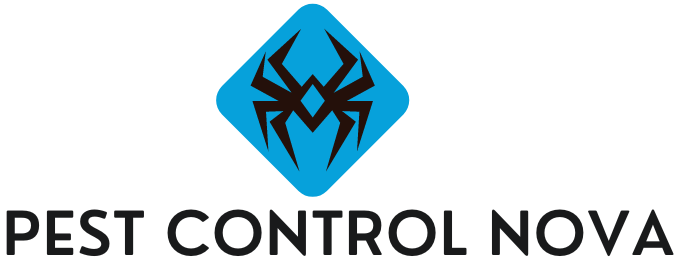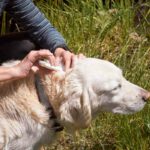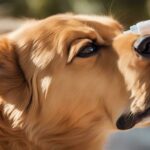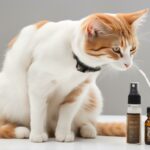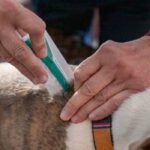Welcome to my article about exclusion animal removal. If you are dealing with unwanted wildlife intruders in your home, exclusion animal removal is an effective and humane solution to consider. This method aims to exclude animals from your living space by identifying entry points and sealing them off, preventing further infestations.
Key Takeaways:
- Exclusion animal removal is a solution to deal with unwanted wildlife intruders.
- This method aims to identify entry points and seal them off to prevent further infestations.
- It is an effective and humane solution to keep your living space free from wildlife.
Understanding Exclusion Animal Removal
When it comes to controlling wildlife intrusions, exclusion animal removal stands out as an eco-friendly and humane method that prevents the entry of animals into your property. Unlike traditional traps or toxic chemicals, exclusion animal removal is a non-lethal method that does not harm the wildlife.
The primary goal of exclusion animal removal is to prevent animal entry into buildings, attics, and crawl spaces while also not causing harm to the animals. By doing so, this method ensures that wildlife can coexist with us without causing unnecessary damage or posing health risks.
To achieve the goal of preventing entry, exclusion animal removal involves identifying entry points and sealing them. This process typically begins with a thorough inspection of the property to identify all possible entry points. Common entry points include gaps in walls, roofs, or foundations. Once identified, these entry points are sealed using appropriate materials such as wire mesh or foam.
Overall, exclusion animal removal offers a humane and effective way to control wildlife intrusions. By preventing entry and ensuring that the animals remain unharmed, this method provides a sustainable solution that protects both the property and wildlife.
How Does Exclusion Animal Removal Work?
The process of exclusion animal removal involves several steps, starting with a thorough inspection of the property. During the inspection, I will identify potential entry points where wildlife may gain access to your home. These can include gaps in walls, roofs, or foundations, as well as open chimneys or vents.
Once identified, the next step is to seal these entry points. This involves using materials such as heavy-duty screening, steel wool, or foam to close off any gaps or holes. It’s important to use materials that are strong enough to withstand the strength and agility of the wildlife, as they will often try to force their way back in.
Sealing entry points is crucial because it prevents animals from entering your property, but it’s also important to ensure that animals already inside are safely removed. This means setting up humane traps or one-way doors that allow animals to exit but not re-enter the property. Once the animals are removed, the entry points can be further secured to prevent re-entry.
The final step of exclusion animal removal is to inspect the surrounding area and identify any factors that may attract wildlife, such as food sources or excessive water. Taking steps to remove these attractants can further reduce the likelihood of future wildlife intrusions.
Overall, the process of exclusion animal removal requires careful inspection to identify entry points, followed by effective sealing of these points to prevent wildlife from entering. It’s important to use humane methods and seek professional help to safely remove any animals already inside the property.
Benefits of Exclusion Animal Removal
Exclusion animal removal offers several benefits that make it a popular solution for homeowners facing wildlife intrusions. Firstly, it is an eco-friendly method of wildlife control, as it does not rely on harmful chemicals or pesticides. Secondly, it prevents property damage caused by wildlife, thus saving homeowners money on costly repairs. Lastly, exclusion animal removal protects human health by preventing the spread of diseases transmitted by wild animals.
By choosing exclusion animal removal, you can opt for a safe and efficient way of keeping your home free from wildlife intruders. It is a cost-effective solution that ensures the safety of both you and the animals, while also preserving the natural balance of your environment.
Common Wildlife Invaders
Exclusion animal removal targets a range of wildlife that can invade your property and cause damage to your home. Some of the most common wildlife intruders include raccoons, squirrels, and bats.
Raccoons
Raccoons are known for their intelligence and adaptability, making them one of the most common wildlife invaders. They can gain entry to your home through small gaps in your roofing, chimneys and vents. Once inside, raccoons can cause a significant amount of damage to your home and leave behind unpleasant smells and waste.
Squirrels
Squirrels can be a nuisance if they find access to your attic space. They can chew through electrical wiring, insulation and other materials, causing damage to your home and creating a fire hazard. This can be especially problematic during the winter months when they seek shelter from the cold.
Bats
Bats are nocturnal creatures that can squeeze through small openings in your home and roost in your attic space. While they play an important role in the ecosystem by eating insects, their droppings can carry diseases that can be harmful to humans. In addition, bats can cause unsanitary living conditions and unpleasant odors in your home.
Professional Exclusion Animal Removal Services
When it comes to dealing with unwanted wildlife intrusions, hiring professionals is always the best choice. Experts in exclusion animal removal bring a wealth of experience and knowledge, using safe and effective methods to handle wildlife invasions and protect your home.
While attempting a DIY (do-it-yourself) removal may seem cost-effective, it can come with potential risks. Without the appropriate tools and expertise, you may accidentally harm the animals or even yourself. Furthermore, DIY removal often fails to address the root cause of the intrusion, leaving your home vulnerable to further invasions.
By hiring professionals for exclusion animal removal, you can have peace of mind knowing that a qualified team is handling the situation. Professionals conduct a thorough inspection of your property to identify entry points, and use humane methods to remove the wildlife. They also take steps to seal gaps and prevent future intrusions, protecting your home from damage caused by wildlife and ensuring the safety of you and your family.
DIY vs. Professional Exclusion Animal Removal
When it comes to animal removal, there are two options available: DIY or professional services. While DIY can be cost-effective, it comes with potential risks that may outweigh its benefits.
Pros and Cons
DIY animal removal can be less expensive than hiring a professional, particularly for small infestations. However, it requires significant time and effort, and there is a chance of failure if the problem is not properly identified and treated. Additionally, the lack of experience and knowledge can lead to unintentional harm to the animals or oneself.
Professional exclusion animal removal services, on the other hand, offer the advantages of trained and experienced technicians who can safely and effectively handle wildlife intrusions. They provide comprehensive solutions and take care of all necessary steps, from identifying entry points to sealing gaps and repairing damages caused by animals.
Cost-Effective Considerations
While professional exclusion animal removal services may initially seem more expensive than DIY, they may be more cost-effective in the long run. Professionals can ensure that the problem is correctly identified and treated, preventing a recurrence of the infestation that may lead to additional expenses and damages. Additionally, they offer warranties and guarantees, providing peace of mind and protection for your investment.
Potential Risks of DIY
DIY animal removal can lead to a number of potential risks, ranging from physical injury to legal consequences. Depending on the state, wildlife removal may require special permits and licenses that DIY enthusiasts may not have. Moreover, handling wild animals without proper training and safety equipment can be dangerous and expose individuals to diseases or infections.
Furthermore, incorrect treatment can lead to the animal’s suffering or death, leading to legal issues and moral dilemmas. Professional exclusion animal removal services ensure humane and eco-friendly treatment of wildlife, avoiding any ethical concerns and legal implications.
Conclusion
In conclusion, exclusion animal removal is a safe and effective way to keep your home free from unwanted wildlife intruders. As discussed in this article, exclusion animal removal involves using humane methods to control and prevent wildlife from entering your property. It offers several benefits, such as protecting your property from damage caused by wildlife and safeguarding your health.
It is essential to hire professional exclusion animal removal services to ensure that the process is carried out safely and effectively. Experts will conduct a thorough inspection of your property to identify entry points and use safe and humane methods to remove the wildlife and seal any gaps.
While DIY exclusion animal removal may seem cost-effective, it can be risky and dangerous. It may not address the root cause of the problem, and it may even lead to legal issues. Therefore, it is highly recommended to hire a professional for the job.
Overall, by understanding the process, benefits, and the importance of professional services, you can ensure a safe and effective removal of wildlife from your property. So if you encounter any wildlife intruders in your home, don’t hesitate to seek the help of professionals for exclusion animal removal.
FAQ
Q: What is exclusion animal removal?
A: Exclusion animal removal is a method used to keep unwanted wildlife intruders out of your home.
Q: How does exclusion animal removal work?
A: Exclusion animal removal involves an initial inspection to identify entry points, followed by sealing gaps to prevent wildlife from entering your home.
Q: What are the benefits of exclusion animal removal?
A: Exclusion animal removal is eco-friendly, prevents property damage caused by wildlife, and protects human health.
Q: Which common wildlife invaders does exclusion animal removal target?
A: Exclusion animal removal targets common invaders such as raccoons, squirrels, and bats.
Q: Why should I hire professionals for exclusion animal removal?
A: Hiring professionals ensures safe and effective methods are used to handle wildlife intrusions.
Q: What is the difference between DIY and professional exclusion animal removal?
A: DIY removal can be cost-effective but carries potential risks, while professional services provide expertise and a safer approach.
- Does Flea Treatment Kill Lice? - September 8, 2023
- Does Flea Treatment Kill Mites? - September 8, 2023
- How to Put Flea Treatment on a Dog? - September 8, 2023
